April 22, 2018
The Herero
This morning, after breakfast, Charles and Andy and I met with our Herero guide, Ueera, for our trip to visit the Himba tribe. Charles had visited them once before, but was as excited as I was about visiting them again. Those who know me, know that I love meeting indigenous people in the places I visit. And in Africa, what could be more exciting than getting to know African tribes?
Ueera is Herero and he asked if we minded if we stop at his village down the road, the Khowarib Village, as he needed to pick up something. Mind? I was thrilled! Of course, we said yes. He told us that his mother and aunts would be there, and we were more than welcome to take as many pictures as we wanted. Music to my ears!
We drove the few minutes to his village which looked like a large sandy area with square houses on it. The Herero homes are always square while those of the Himba are round (which make them easier to heat). The houses were made of mud, but there were also camping tents here and there. There was a corral on one side for the goats and sheep. And this village had running water.
His girlfriend, who lives with him, was siting outside their house doing laundry in a large bowl. His mother, aunt and sister were sitting yards away, around a small campfire with some tea kettles on it. And while his girlfriend was wearing a t-shirt and jeans, his mother and aunt were wearing long dresses.
And that is the most distinguishing feature of the Herero. The women wear Victorian-style floor length, big and puffy crinoline gowns, with many layers of petticoats. I had noticed this when we were driving and thought it was the most interesting thing. Victorian dresses in the middle of Africa? Victorian dresses in this heat? Yes, Victorian dresses in Namibia.
Ohorokova – the Herero dresses
The Herero, like the Himba, traditionally were semi-naked. But when the German missionaries came in the late 1800s, they discouraged nakedness among the Herero and essentially coerced the women into wearing these Victorian dresses. The Herero women adapted the style and to this day they still wear these dresses. The dress is made up of a bodice that buttons up close to the neck, long sleeves and a shawl worn across the shoulders. They are made of vividly colored fabric and while the daily dresses are often patch-worked, the ones for special occasions are made from a single cloth. The women also wear a hat, or headdress, which is built to represent the horns of their cattle, as cattle are so important to the Herero. And the women, at least the older ones, wear these dresses and hats every day to do their chores, walk to the store, all the time. While the older Herero women fiercely protect their dresses as a crucial part of their cultural identity, the younger generation we saw were in jeans and t-shirrs, or short skirts. Progress? And although the dresses were often quite beautiful (as are the women!), all I could think of was how hot the women must be with those long, heavy dresses.
Meeting the Family
So Ueera introduced us to his mother and I politely said “Moro,” good morning. There were no men around and I don’t know if there was a father. Although he told us we could take as many pictures as we wanted, his mother sort of scowled at me as I pointed my camera at her. But at the same time, she also posed. Even when Ueera posed with her for a family picture, she refused to smile. I showed her each picture I took and the most I got out of her was a grunt. The aunts however gave me big smiles, one, with encouragement, showing me the gold crescent in her front tooth and the other with a big gap where her front tooth was missing.
A Little Bit of Herero Background and History
The Herero were originally part of the Himba tribe, originating in Angola. But they split apart around 150 years ago as the Herero assimilated and settled in towns and villages and the Himba continued their nomadic life. Most of the Herero, about 250,000, reside in Namibia, although some can also be found in Botswana and Angola.
Life was not always peaceful for the Herero. During the late 1800s, German settlers displaced the Herero from their land and established their own farms. Although they entered into a contract with the native elders, the territory became a German colony, called German South West Africa. There were conflicts between the two groups as the Herero had difficulty accessing their land and water and were discriminated by the white immigrants. The Herero’s cattle were slowly being taken away, and cattle equals money and wealth. This was a problem until Namibia finally gained its independence.
While the Herero we met spoke English, their native language is a Bantu one, also called Herero (Otjiherero). And we did hear our guide speak this language with his mother. Unlike the Bantu tribes, who are primarily subsistence farmers however, the Herero are herdsmen, making their money raising livestock, in this case, goats, sheep and cows. And because cows are wealth, or money in the bank as we were told, they only eat beef on special occasions, such as weddings. Otherwise they eat lamb and goat meet. They never eat salad, stating that “we don’t eat flowers.”
Children do go to school. This village had a school which went until the seventh grade. After that, the children have to go to another village to continue their education.
Boys are circumcised at age 2-3 years. Girls are not.
Bilateral Descent
I have heard of patrilineal practices and matrilineal practices, but the Herero have what is called a bilateral descent system, which means they trace their heritage through both their father’s lineage (called oruzo) and their mother’s lineage (called eanda). Homosexual men are given the status of “medicine man” or “wizard.”
Herero Holy Fires
The Herero people believe in Okuruo (holy fire), which is a link to their ancestors to speak to God and Jesus Christ on their behalf. Modern-day Herero are mostly Christians. But they also believer in spirits.
Herero and the Omuroi
Omuroi is a Herero name for someone suspected of being a witch or flying at night. It is like a ghost which disrupts the sleep of the living. Some Herero sleep with candles on, believing that the omuroi are averse to light. Some may even bring in spiritual doctors to perform ceremonies to chase this omuroi away. This superstition has been passed on from generation to generation.
The Himba
When we finished taking pictures, and Ueera got what he needed, we hit the road again heading to the Himba village, Ontjondunda (meaning “at the top”, i.e., on top of a hill).
I mentioned above that the Himba and Herero were once one tribe. During the late 1800s, there was a bovine epidemic in Namibia. Most the cattle that the Herero depended on, perished. So the tribe moved south, away from the Angolan border. But some members of the tribe decided to stay and take their chance for survival in familiar territory. Those that remained were considered beggars because they would ask other tribe members for help in their search for cattle and crops. And beggar in the Otjiherero language is Himba. Thus the Himba tribe was born.
We parked our car and Ueera left us taking pictures of the sheep and goats while he went to tell the tribe elder that we were there. So it was us and the goats, who totally ignored us. The Himba homes are all round, better for heating, and even the huts around the livestock were round. I did notice one square home. Turns out that one of the men is so tall, he can not stand up in the round hut, so they built him a square home with a higher ceiling.
I also noticed that the trees had lots of dolls, shell necklaces and pots hanging from them. I assumed this was to keep the evil spirits away or to bring good luck. But no. This was their way of showing what was for sale!
And on one tree there was a large gourd where the goat and cow milk were stored to keep it cool.
The Himba are one of the most interesting tribes I have visited or learned about. One of the head woman came over with Ueera and again, we said Mora. She, like all the Himba, was covered in orange paste and had long plaits of hair with black pom poms at the end of each braid. She wore lots of beads, a short goatskin skirt but was topless. There were babies and young children running around everywhere. There were also a few Herero children from a neighboring village. You can tell them apart because the Herero children are in Western clothes. And each child was more beautiful than the other. Both the Herero and the Himba have the most beautiful faces.
And this for the OvaHimba (the plural of Himba), is still the tradition. So what it this all about?
The Himba and Water
The Himba never bath, except at birth and at death. In fact, it is forbidden to touch water. According to legend, this belief dates back to the great droughts where water was scarce and only men were allowed access to water for washing purposes. We had heard this and I was curious as the Himba would have strong body odor. But they did not. How could that be? Here is the rest of the story,
Otjize – the Orange Paste
The Himba women (and not the men) apply a mixture of special pastes, called otjize, which are scented with aromatic resins. The color of this paste is a deep orange, which represents the color of the red earth and of blood, the essence of life. The Otjize is believed to ensure the ideal of Himba beauty. But practically speaking, this paste keeps the skin clean and moist, blocks hair growth (why don’t Americans know this?) and acts as a sunscreen and insect repellent.
Our Himba guide invited us into her round hut. The hut, made of dung and mud, was empty except for a few kitchen tools. She showed us how she pounds ochre stone (hematite) into small pieces and then mixes those pieces with butter. She built a small fire to heat it all together and then rubbed it on her skin, and on Ueera’s arm so show us the true color. Her baby was walking around the whole time, every now and then sitting next to her, grabbing her breast and nursing.
She also put some smoldering charcoal into a small bowl of herbs mixed with the wood of the Commiphora tree (see post, Namibia chapter 4, for a description of this tree) to create smoke. She fluttered her hand, gently pushing the smoke between her legs. This is how Himba women take a daily smoke bath in order to maintain personal hygiene.
The Himba are fiercely proud of their traditional hairstyles and clothes. They can take several hours each morning for their beauty care. Like the Japanese geishas, and other African tribes, they sleep on wooden pillows so as not to ruin their hair style during the night. Since I have a special interest in sleep and sleep habits, I was lucky to be able to buy one of these wooden pillows.
Himba Clothes
What Himba women wear and how they wear their hair informs observers about their status in society and in womanhood. It tells whether they have had their first period or whether their periods are now regular. It tells if they have had one child or two or more children. I mentioned that this woman, and all the others, wore a goatskin skirt which was embellished with shells and copper jewelry. The women all wear lots of beaded necklaces, particularly the married ones and the ohumba, a large white shell necklace which is passed from mother to daughter. I was able to buy one of the ohumba, and it was authentic, so I’m not sure how that fit into the “generation to generation.” Ueera had the women line up for us so he could teach us about the meaning of the different skirts and different beads.
The adult Himba women all have tall. beaded anklets called omohanga. These are about six to eight inches high from their ankles up. They can hide their money here and also protect themselves against venomous animal bites. Married women with one child have one stripe on the omohanga while those with two or more children, have two stripes. In other words, everything they wear and everything they do with their hair communicates the message of who they are and what their status is.
- One stripe = one child
- Two stripes = 2 or more children
Himba Hairstyles
Hair also gives away a woman’s status. The young girls we saw had two braids (ozondato). Once a girl passes puberty, the two braids cover her face so the men know she is not ready to be married. When she is ready to marry, the braids are removed from her face so potential suitors can see her. Once she is married for at least one year, or when she has a child, she begins to wear a headdress, the erembe, made of cow or goat leather.
Once a woman marries, her hair is first lengthened with straw then woven together with hair extensions to create dreadlocks. Their scalps all looked like they were caked in orange mud, which essentially, they were as they hair is covered in otjize (the deep orange paste) and finished with black cow tail extensions, added to give the distinctive pom-pom look. Well, it used to be cow tails. Now they use fake, plastic hair extensions. The woman clearly take great pride in their hair as we saw many young women sitting on the ground and just brushing out the black plastic tips.
We did not see any men, as they were all out with their cows, or more likely, in the bars in town. But we were told that the men keep their hair very simple. Single men wear an ondatu braid on the back of their head, married men cover their hair with turbans for the rest of their lives, only shaving their hair and removing their turbans during funerals. We did however see lots of little babies and boys who all had shaved heads. Little babies also wear bead necklaces and as they get older, shells are added on.
Once our demonstration of how their cover themselves with otjize and how they keep themselves smelling fresh was over, we were invited out into the field where a group of women all sat in a circle. Babies and children were running around everywhere. Each woman (or girl) had her wares displayed in front of her and each waited for me to look them over and decide what to buy. Such a dilemma! I obviously could not buy from all of them. So I entered the circle and slowly walked around looking over everything. Basically, they all had the same things. Some had little wooden animals that were clearly factory made. Many had the Himba dolls, which interestingly were just for us tourists as Himba children do not play with dolls, but rather play with stones. They all also had Himba shell necklaces and beads. One had wooden pillows. Slowly, I chose one thing from this woman and another from another woman. I tried to “spread the wealth” and I had no problem buying things as this was a way to give back to their community. And after each purchase, I said, “oku heppa” which means thank you, and we shook hands. At the end, one of the woman gave me a plastic PVC bracelet which she had carved and signed with an X.
Himba Education
Signed with an X? Yes. The Himba do not go to school. Ever. They believe that to be nomads and herders you don’t have to learn to read or write. So they don’t. And if they did, the elders know that they educated children would leave the tribe and that would be the end of their culture. So, no one goes to school. No one learns to read or write. They stay in the village and watch the livestock. And while there is some intermarriage with the Herero, they mostly stick to themselves. The Herero say that they Himba call them stupid because the Herero children go to school and the Herero then have to pay someone to watch the herds. The Himba save money by having their children watch the cattle, so they are the smarter ones.
Himba Marriages
This creates a problem, as there aren’t that many Himba left. There are about 50,000 in the all of Africa and only 60 in this village. Himba will marry their cousins. Aunts will marry nephews. Only siblings do not marry each other. They prefer to marry those close to them as that keeps the cattle, i.e., wealth, close by. And the Himba are polygamous, so one man can have 6-7 wives – if he is rich in cattle. If he has no livestock, he will never marry. Marriages are arranged, and the man has to have at least three cows: one to give to the father of the bride, one to give to the mother, and one for feasting at the wedding. Woman can be married as soon as they have their first period. Men generally marry at about age 35, but that is a guess as they don’t really know how old they are.
But the Himba are not sexist. A woman can also have many husbands. The only requirement is that everyone agrees to the marriage being open. In fact, extramarital relations are encouraged by families. When their husbands are away with the livestock, it is common for the women who stay behind to have “affairs” with other men. But the first wife is the most important. She is the boss!
But it is the men who especially tend to have several wives, particularly if they are rich in cattle, as the animals’ ownership is passed down from mother to daughter. The more cattle a woman owns, the greater her status and that of her family. When the children are three years old, both boys and girls are given some livestock t ensure that they will have some wealth as they grow up.
Each wife has her own house. Children sleep with their mother until they are weaned. Then the boys sleep outside and the girls all share their own hut. They have no electricity and they use the “bust toilet.”
If a wife comes from another village, she brings her cows to her husband (which explains why there is so much intermarriage within the same village – the cows then stay). If her husband dies, the wife returns to her village with her cows, but with nothing that belonged to her husband as she is not his “blood’ relative. This mean that their children stay in the husband’s village.
Himba politics
The village we visited had about 60 inhabitants with one headman. The position of headman is passed down via the family line.
The Himba essentially speak the same language and the Herero. But because they split and there is not competition between them, the Himba knock out their front teeth which makes everything they say sound different. It is considered beautiful to knock out their four front teeth.
Men and women have equal rights with women making the economic decisions but men having the overall authority. The women are responsible for taking care of the children (theirs and everyone elses – they share in that job). There have no birth control, so each woman may have 9-10 children. They can start having babies as soon as they get their period. They take care of the milking, take care of the livestock when there are not out to pasture. They do all the cooking and serving. They bring the water from the spring. They build their huts, collect firewood. They make their jewelry and clothes, both for themselves and handicrafts to sell. The men are only responsible for watching the livestock when they are out to pasture for the day, building the corrals, and for making babies. This means the women work much harder than the men and therefore also don’t live as long. Women live until about age 75-85 years while the men live to 90-100.
Mukuru or Holy Fire
The Himba believe in a supreme being, Mukuru, and in the holy fire, okuruwo (like the Herero). The fire is they way the communicate with Mukuru. It is kept lit continuously and is the bridge between the living and the dead, a way for the village chief to communicate with their ancestors. The doorways in the houses all face away from the holy fire, with the exception of the chief’s house, which is lit by the sacred glow both day and night, assuring his link to the other side is never interrupted.
Himba Medical Care
The Mopane tree grows in Namibia and is recognized by the butterfly shaped leaves. In addition to using the bark to build fences, it is part of their traditional medicines. When a Himba has a stomach ache, the leaves are boiled and then chewed to relieve the pain. Chewed leaves are also used to treat slow-healing wounds and to stop bleeding. They also drink the water from the boiled leaves to fight colds.
For headaches, they inhale the smoke from burning elephant dung. For the flu, they put the elephant dung in water and boil it, place a blanket over the pot and their head, and inhale the smoke.
If none of this works, they go see the local shaman (who can be a man or a woman) for spiritual healing or for powders and lotions. They might enter a small hut to inhale the smoke from herbs burning in the fire.
And if none of this works, they go to the local clinic.
Our delivery to the OvaHimba Women
Before we left, Charles and Ueera gave out gifts of large bottles of cooking oil, flour, sugar and tea. This was the “payment” for our visit (although I paid them in cash for my souvenirs). The Himba eat maize, milk and goat or sheep, saving the cow beef for special occasions. These gifts therefore, were very much appreciated as it saved them from walking to do the shopping at Sesfontein.
 And as we left, one of the Herero boys also left. Perhaps we were the entertainment.
And as we left, one of the Herero boys also left. Perhaps we were the entertainment.
Communication
So, how did we communicate with the Himba? Ueera did all the translating. He translated what they were saying. He translated and helped me with my bargaining. He explained to us the different hairdos and clothing. He had the women pose for our pictures. It actually made me a bit uncomfortable, as he posed them for us. They are used to it, I imagine, and they likely to it in exchange for their oil and flour and our cash. But it still made me uncomfortable. I wish I could have communicated directly with them. Just saying thank you, and shaking hands, was not enough.
But they speak no English, and other than saying good morning and thank you, I speak no Herero. So we were left to Ueera to do all the communicating for us.
Back to Sesfontein
It was then time to leave. The children waved at us, the women were happy with my purchases and their gifts. We climbed back into the car and drove off. They went back to their chores. We went back into civilization.
Ueera wanted to make a stop at the post office in Sesfontein and again asked our permission to make that stop. Of course, again, we were thrilled to visit the town. I had mentioned to Ueera that I would have loved to photograph Herero women in their beautiful dresses and he told me this would be my opportunity. It was a Friday afternoon, school was out at 1:00 and it was pay-day, and so the women ewould be dressed up and the center of town would be full of children and adults of all ages.
We drove to Sesfontein, parked the car on the dirt road in front of the post office (and shops, and liquor store – that was the extent of the town). And of course, Ueera was right. There were people and children everywhere. Music was blasting. Some of the young men, when they saw me and my camera, posed, laughing. A few started dancing and a middle-aged woman joined them.
And here, among the young women in their short skirts or jeans, were indeed older women everywhere in their beautiful, long Victorian dresses. With each of their permissions, I photographed them. They smiled, most of the time. They posed. Ueera sat next to one of them, told me it was his cousin (I think everyone here is related) and I took their pictures.
And in the midst of all this, there was one Himba woman, just sitting on the stoop  with the other Herero women. I wish I could have heard and understood their conversations. Were they friends? Did they compare notes about their lives? Did they see each other often? They came from the same source, but their lives now were so, so different. Jealous? Compassionate? I will never know. That is one conversation that Ueera did not translate for me.
with the other Herero women. I wish I could have heard and understood their conversations. Were they friends? Did they compare notes about their lives? Did they see each other often? They came from the same source, but their lives now were so, so different. Jealous? Compassionate? I will never know. That is one conversation that Ueera did not translate for me.
Progress?
When we got back to the lodge, we had a long conversation with Emmanuel at the front desk. We talked about traditions. He lamented about how the Herero are losing their culture. Only the Himba retain theirs, and it is only because of the lack of education. Education brings knowledge and the opportunity to earn more money and “make something more of yourself.”
Is this progress? I have brought this up again and again in so many of my posts. Progress is generally good. It brings sanitation. It brings better medical care. It brings better survival for children and for adults. It brings education. But is also brings the slow deterioration of the traditions and culture of your ancestors.




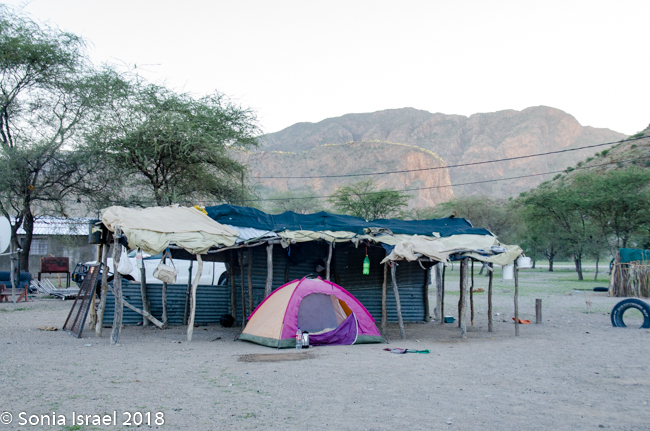


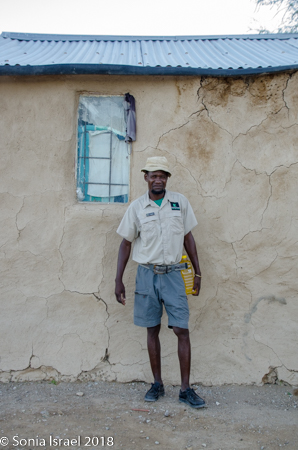
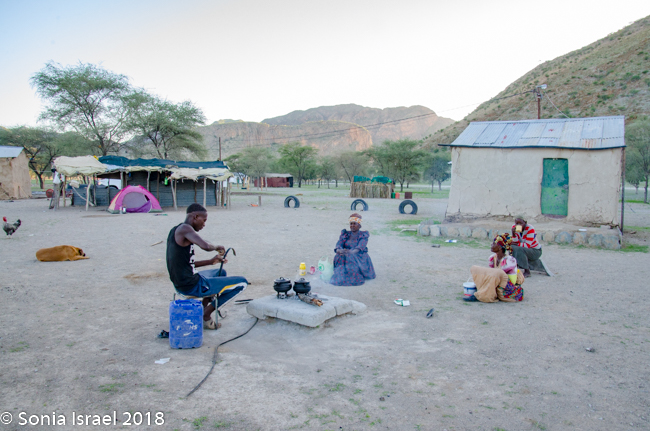




















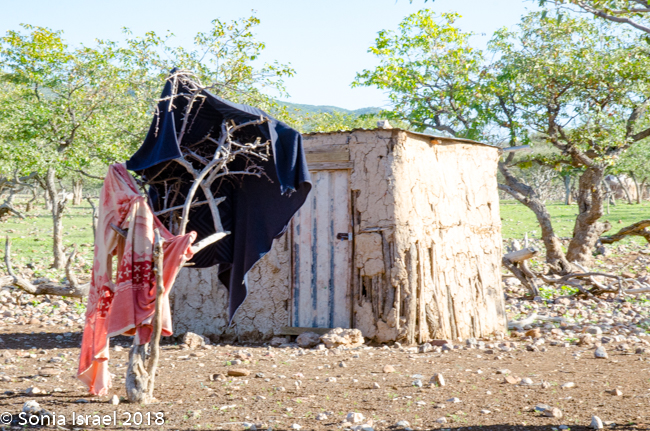









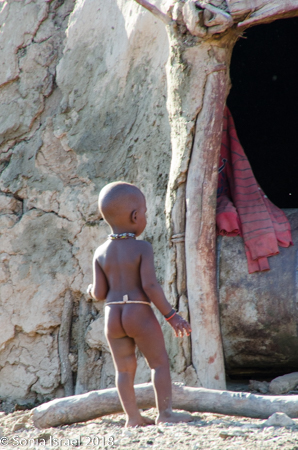





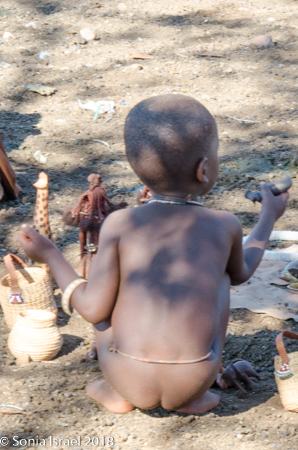




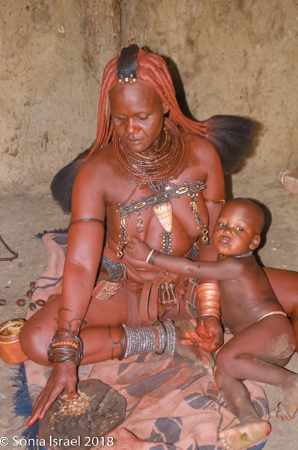










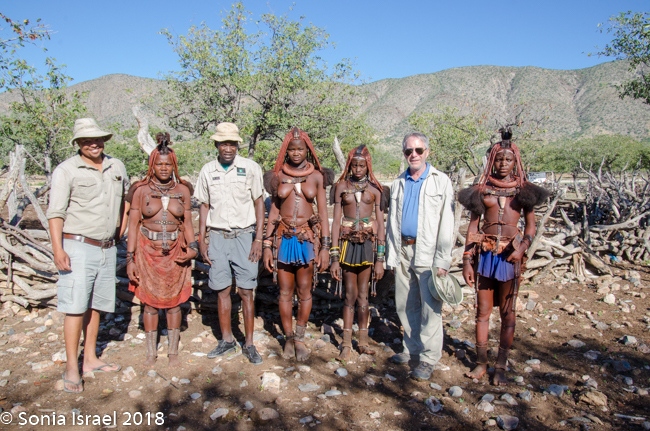
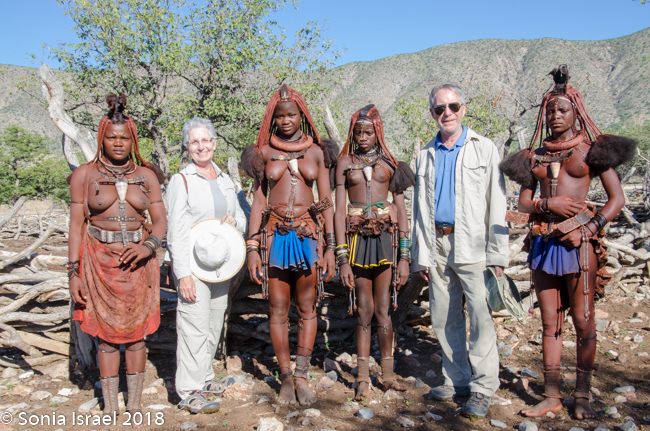







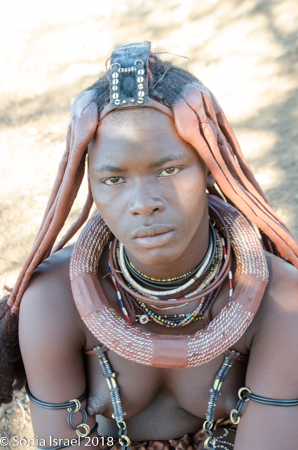









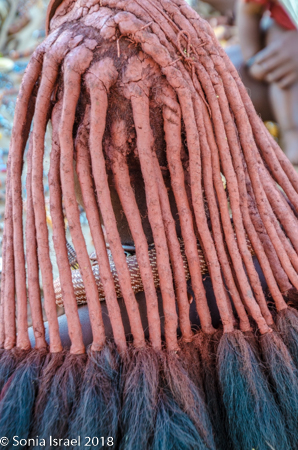
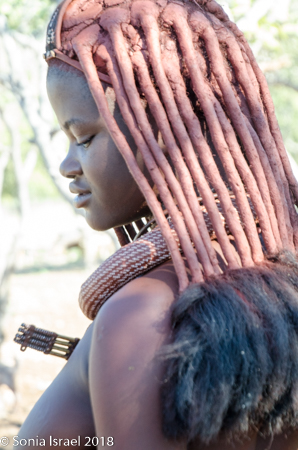



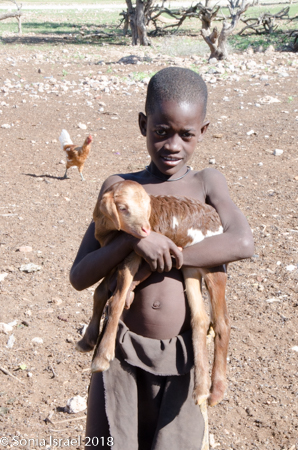













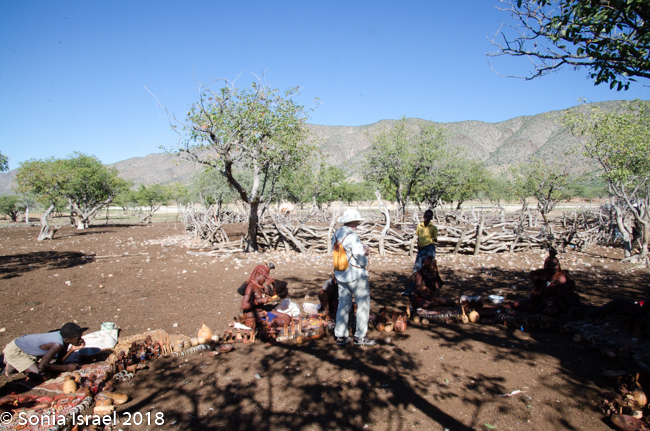



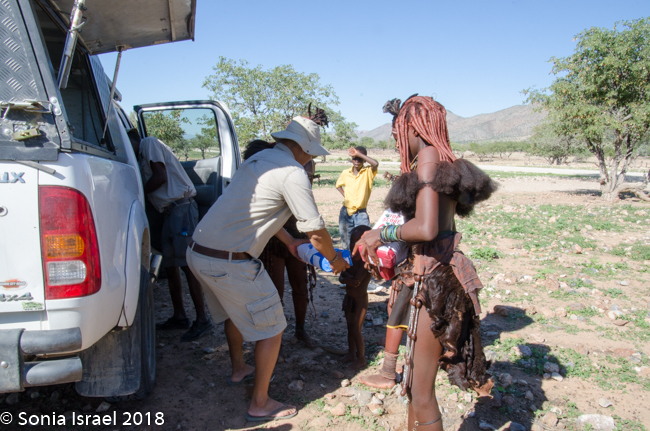








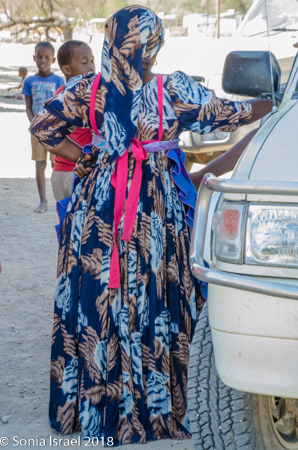



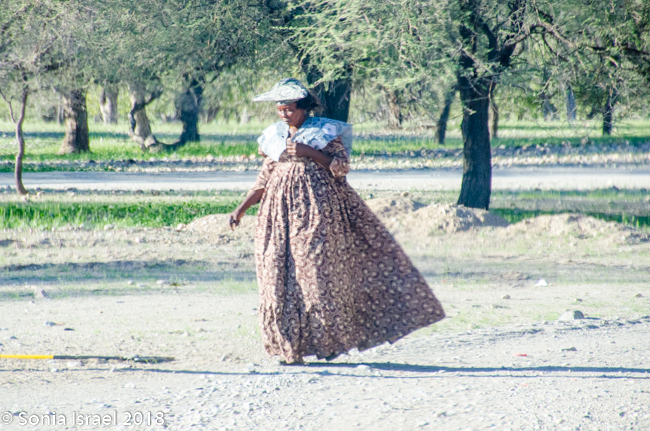
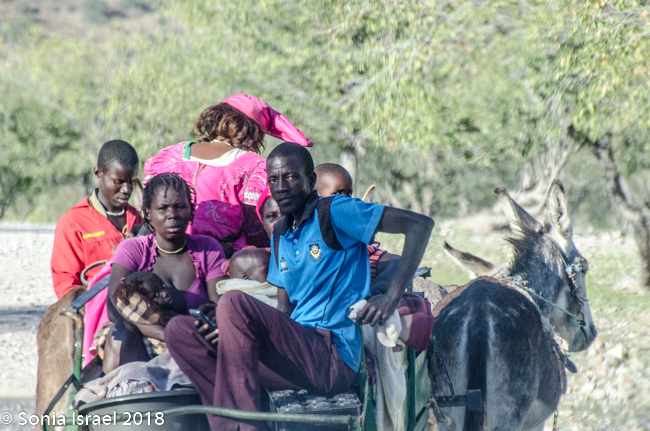
Chris Liebenberg
How incredibly informative, accurate and thought provoking. Bravo and thank you for taking the time to listen and bother to understand.